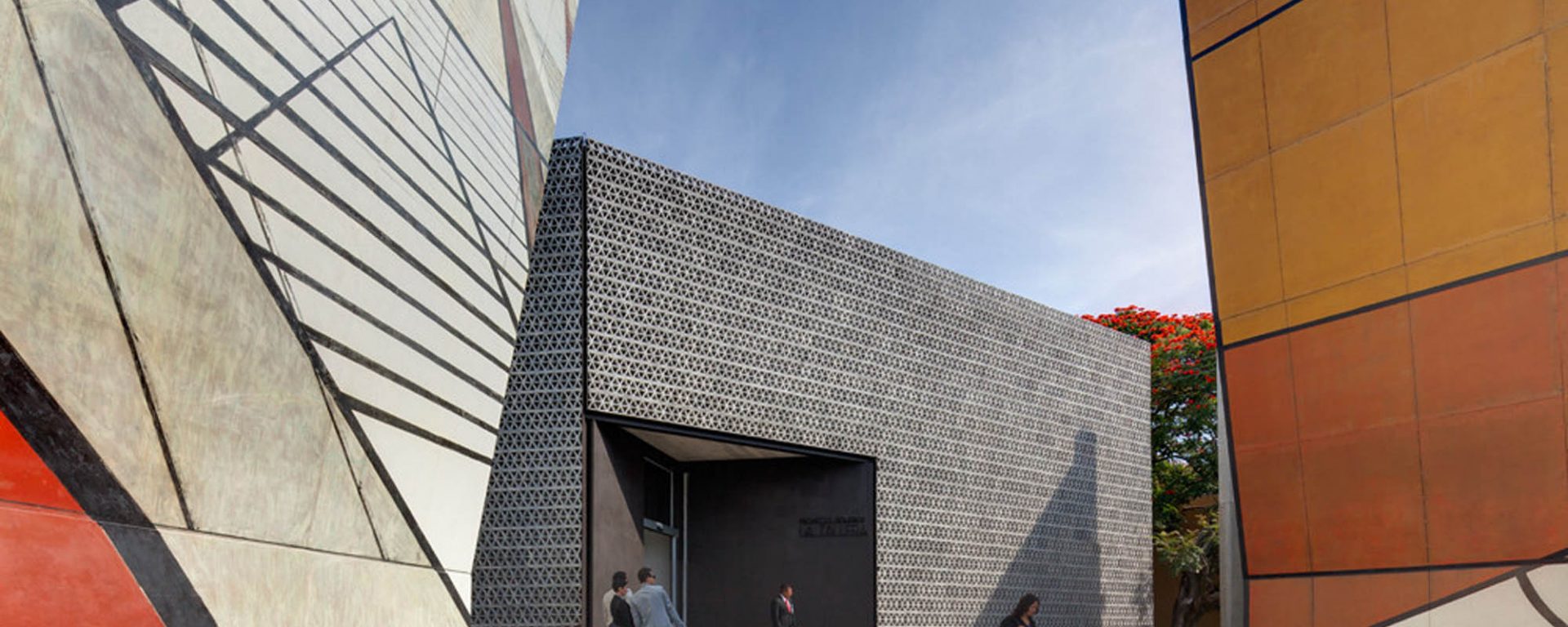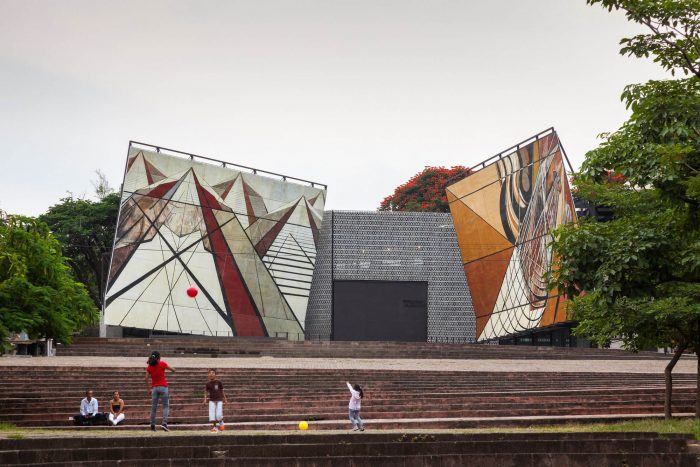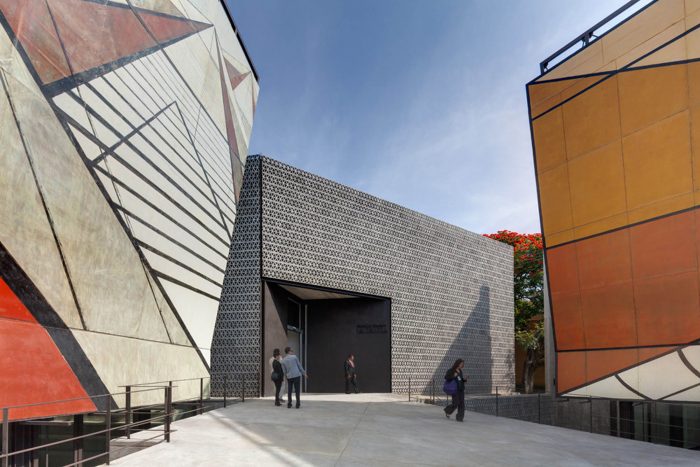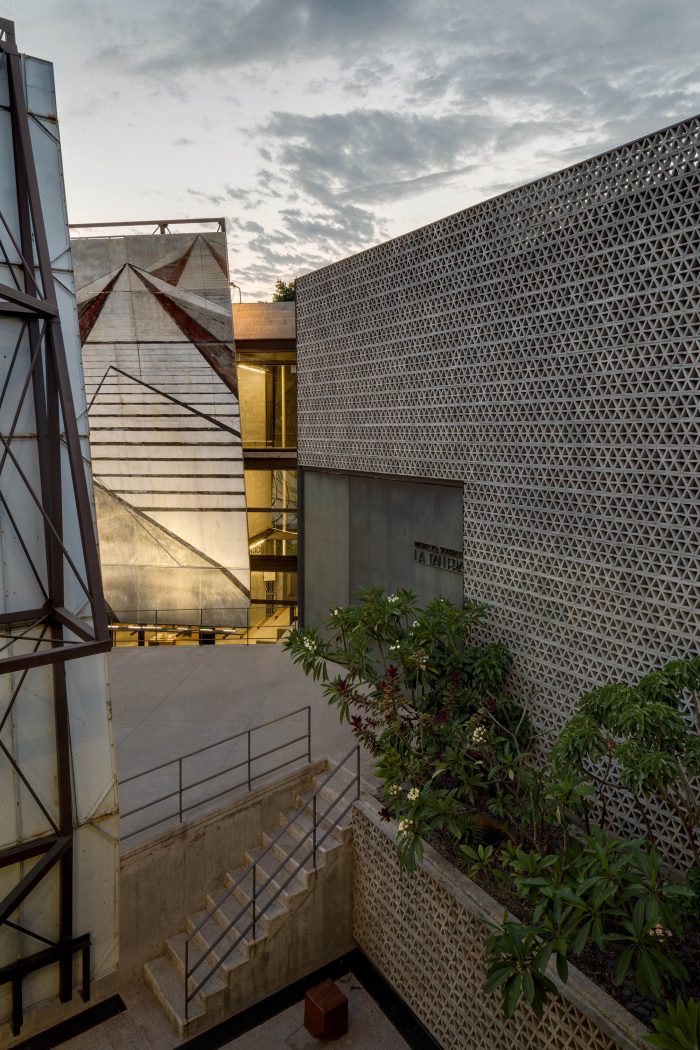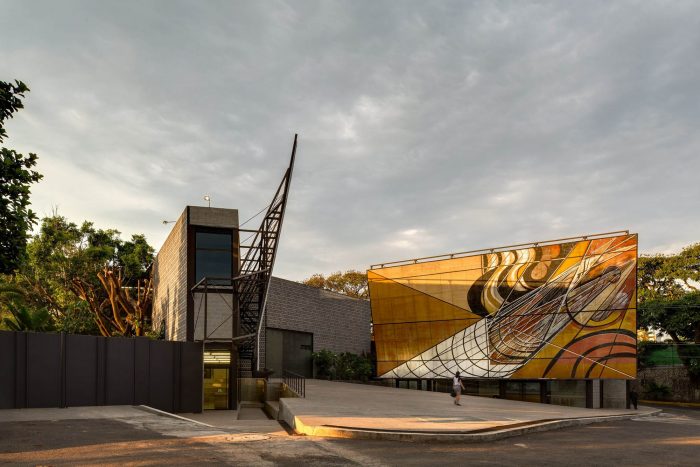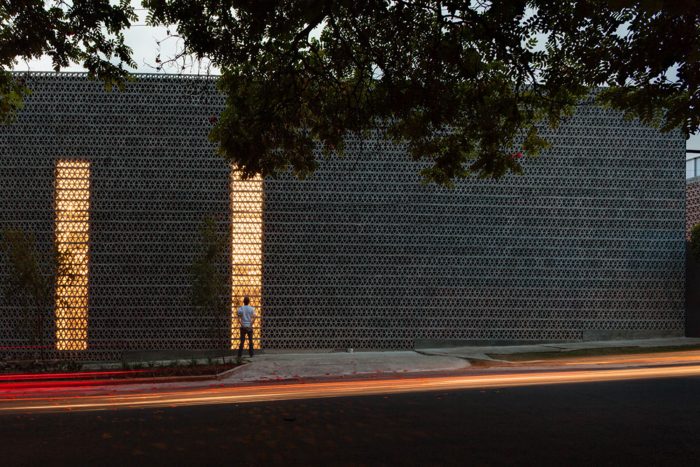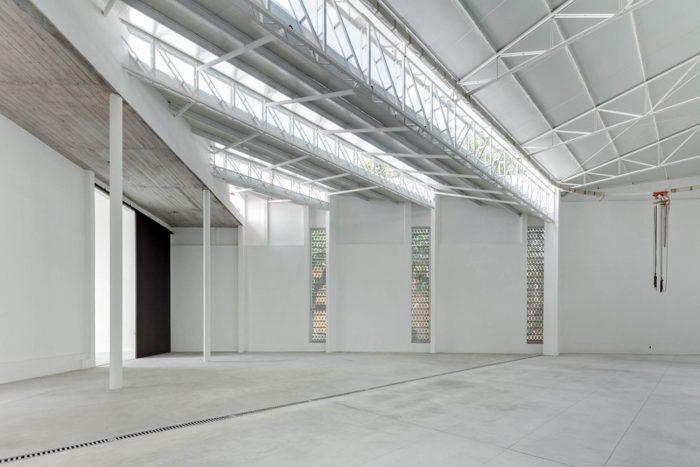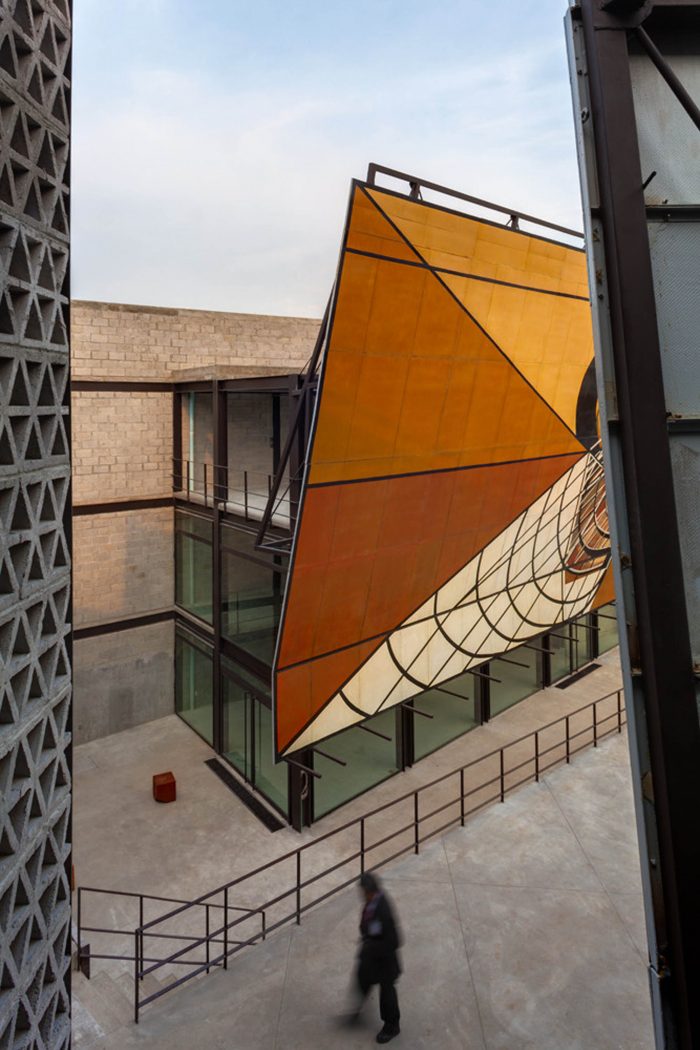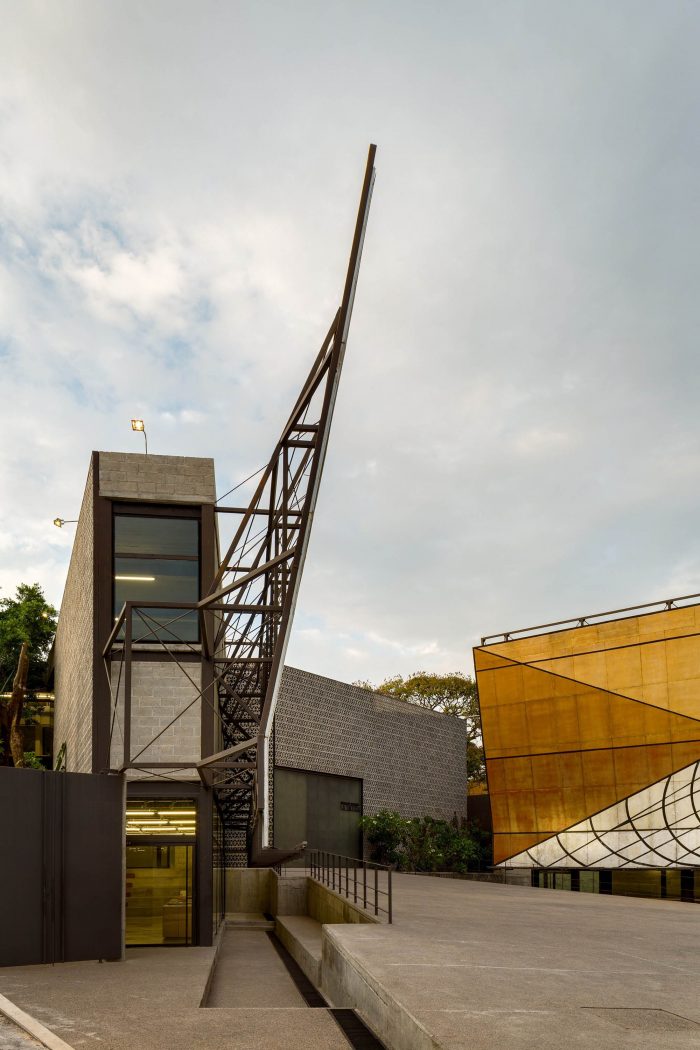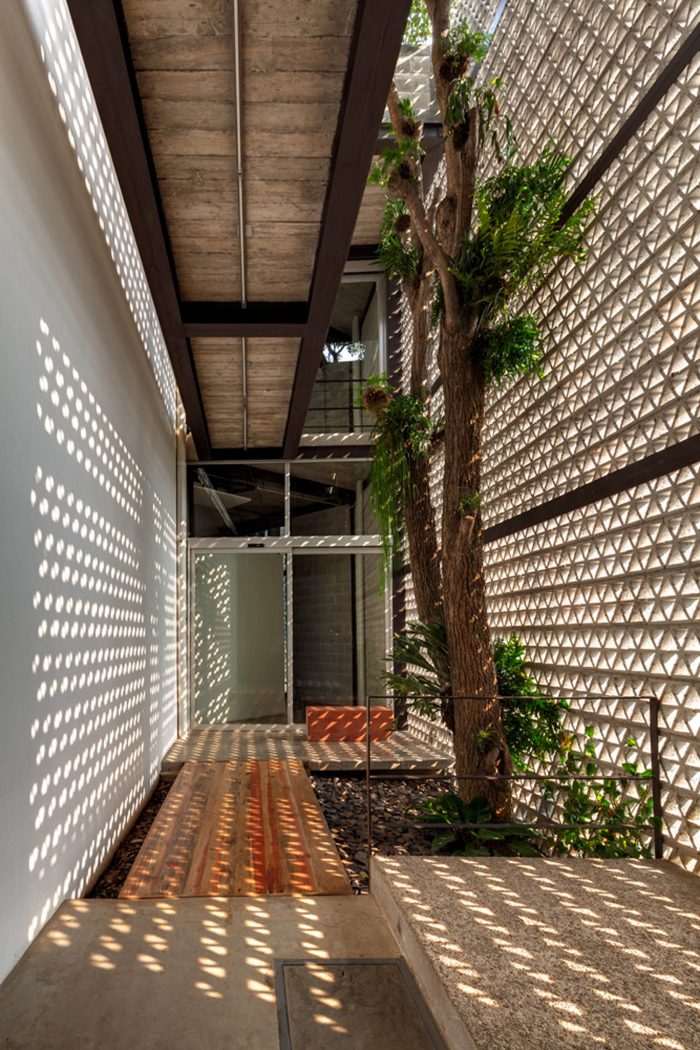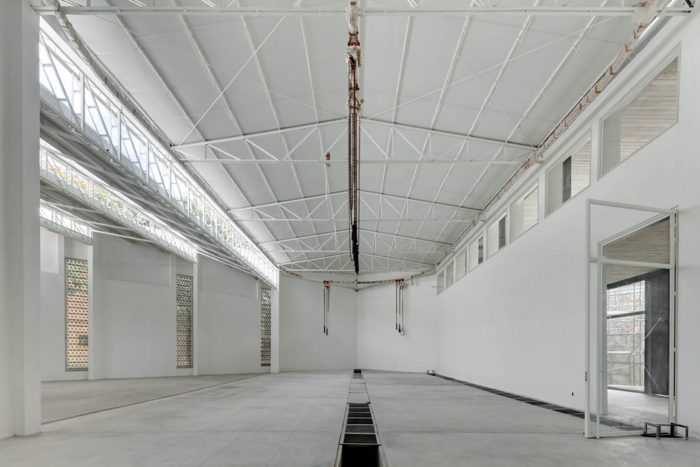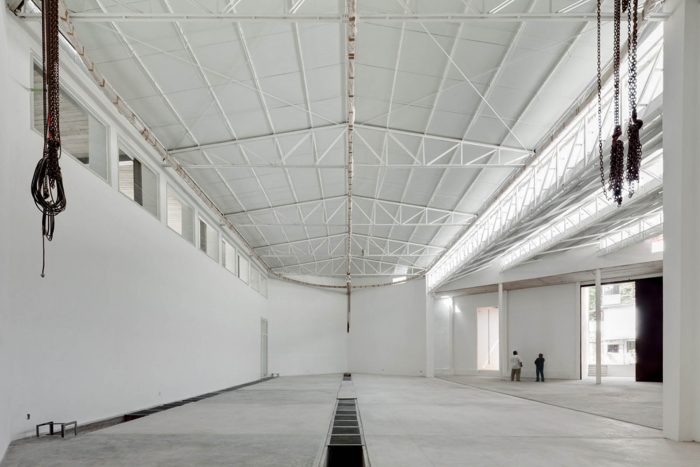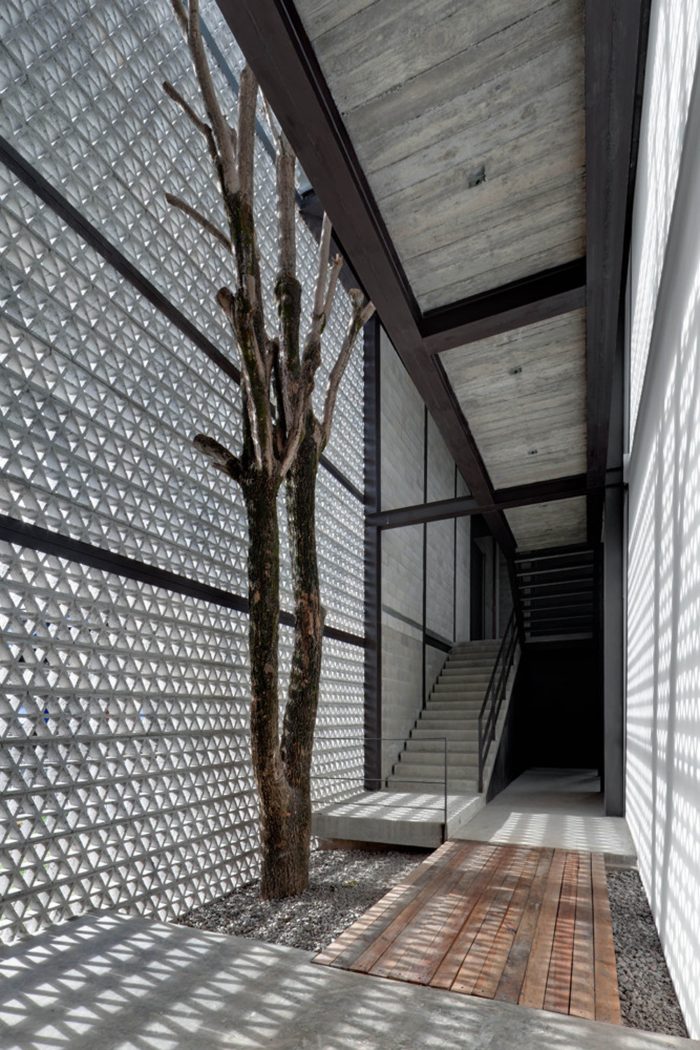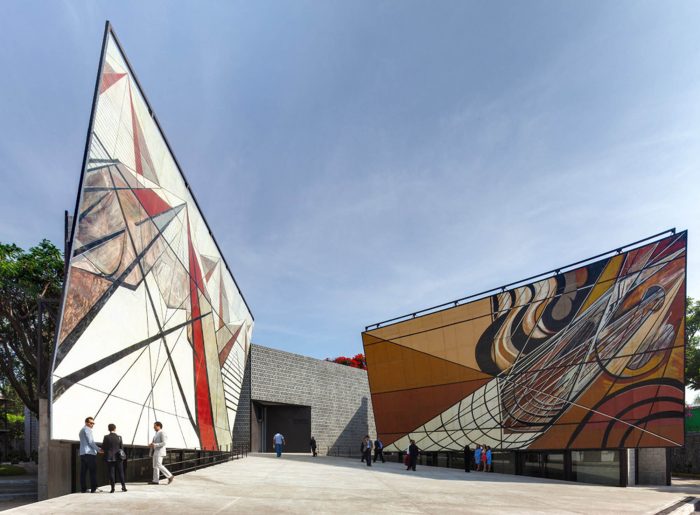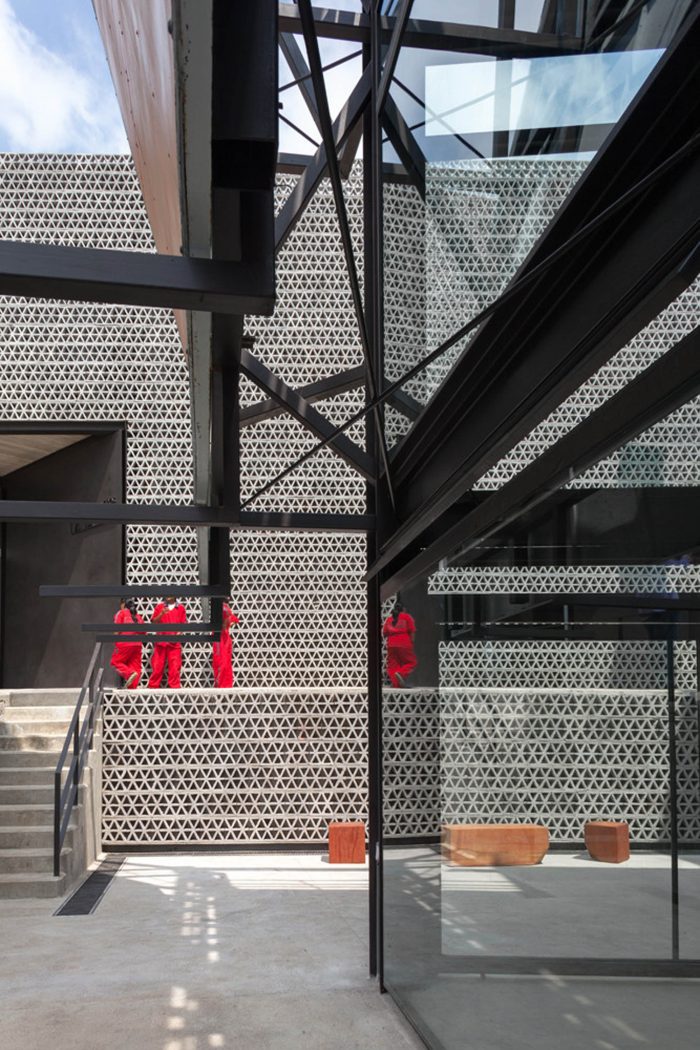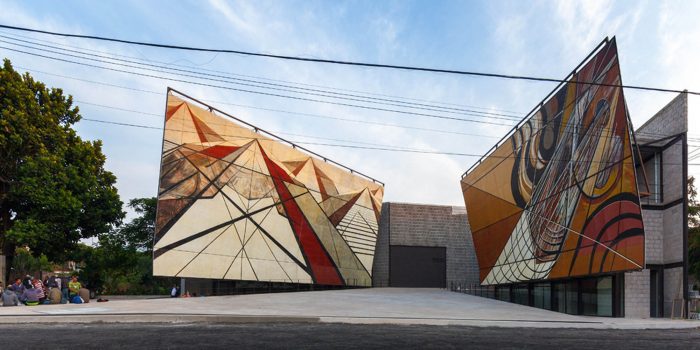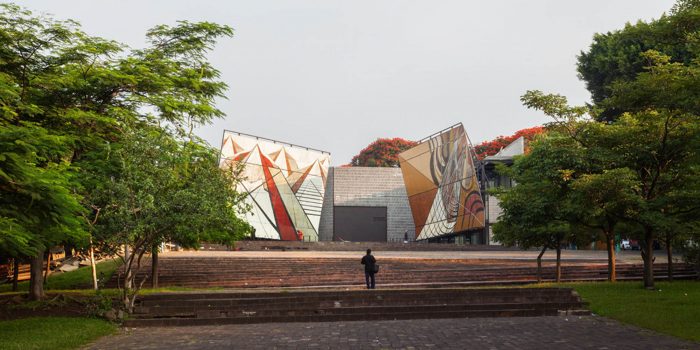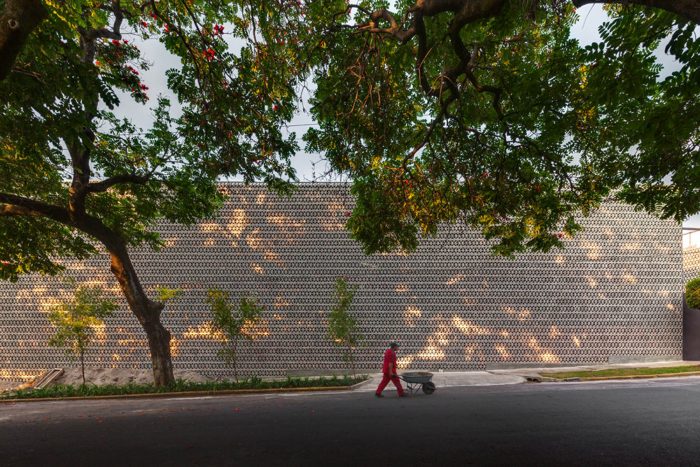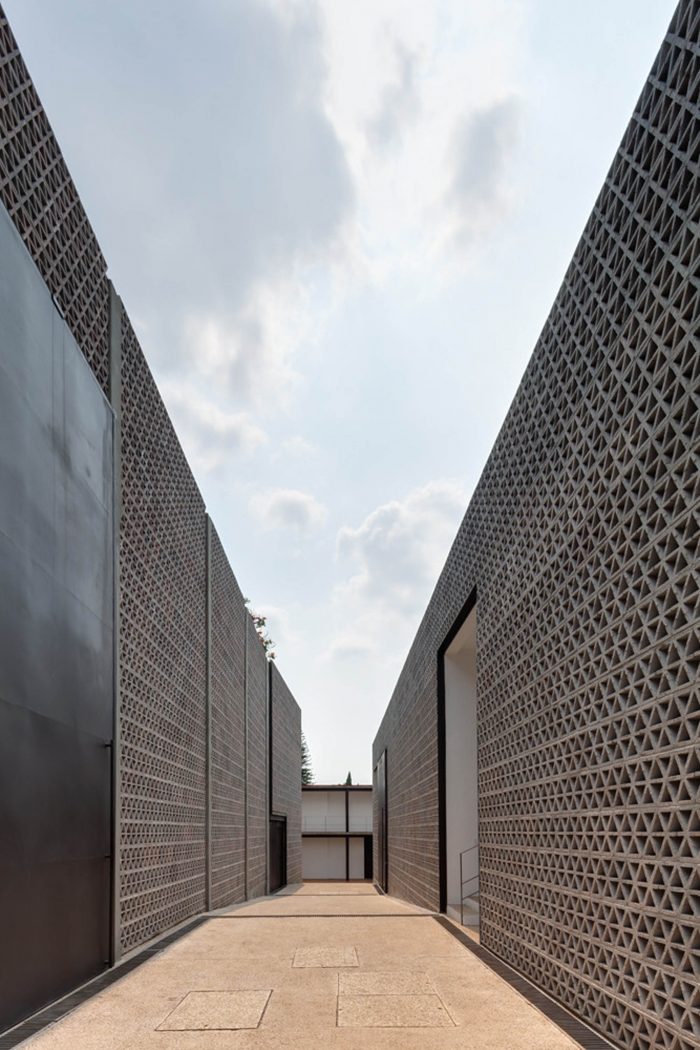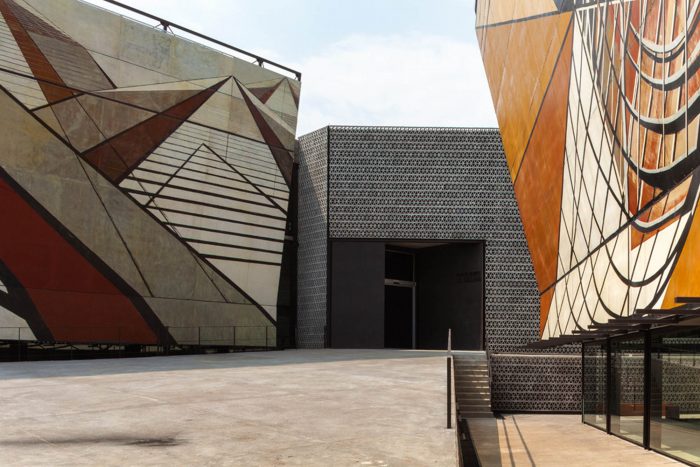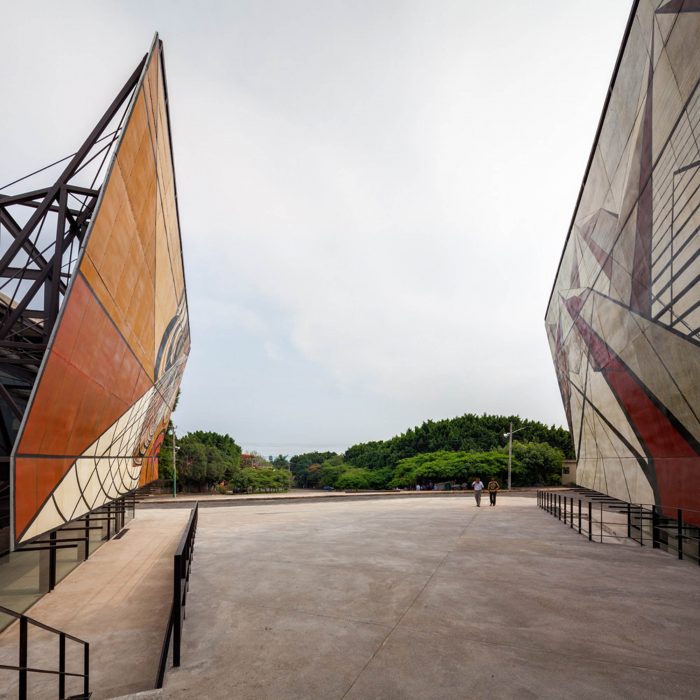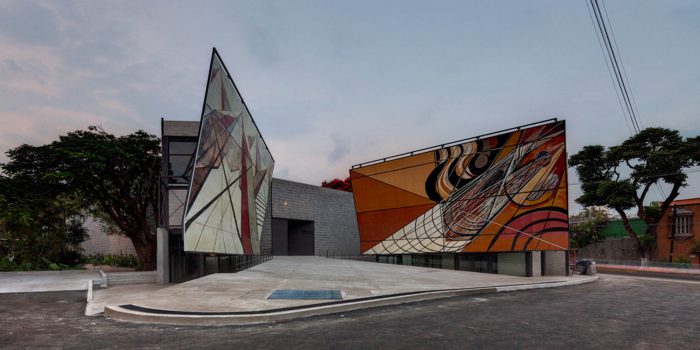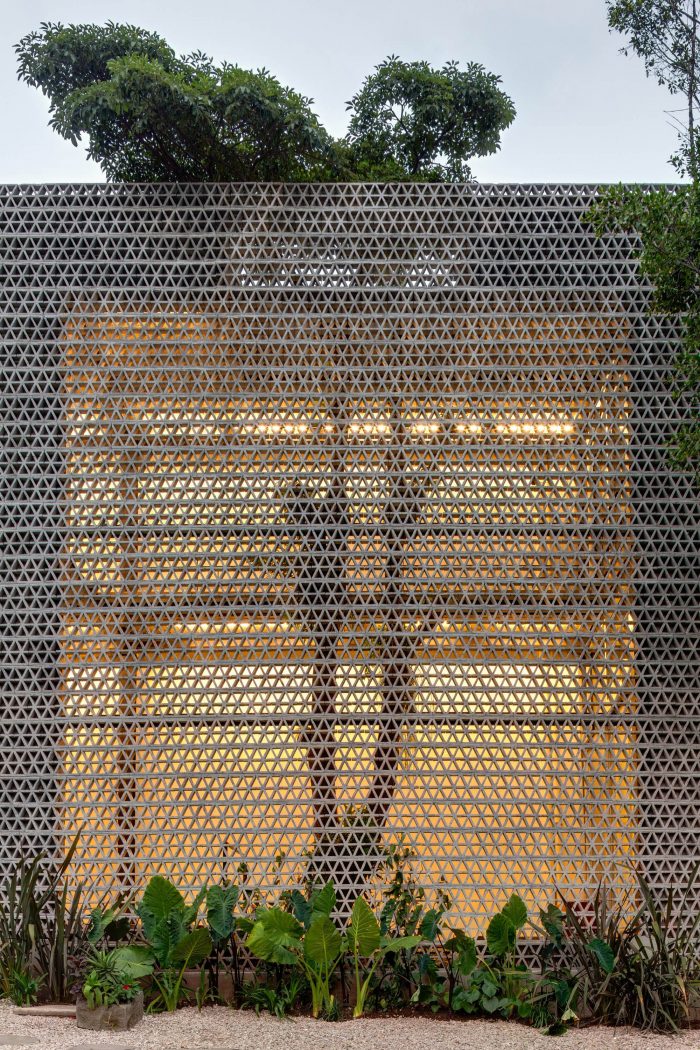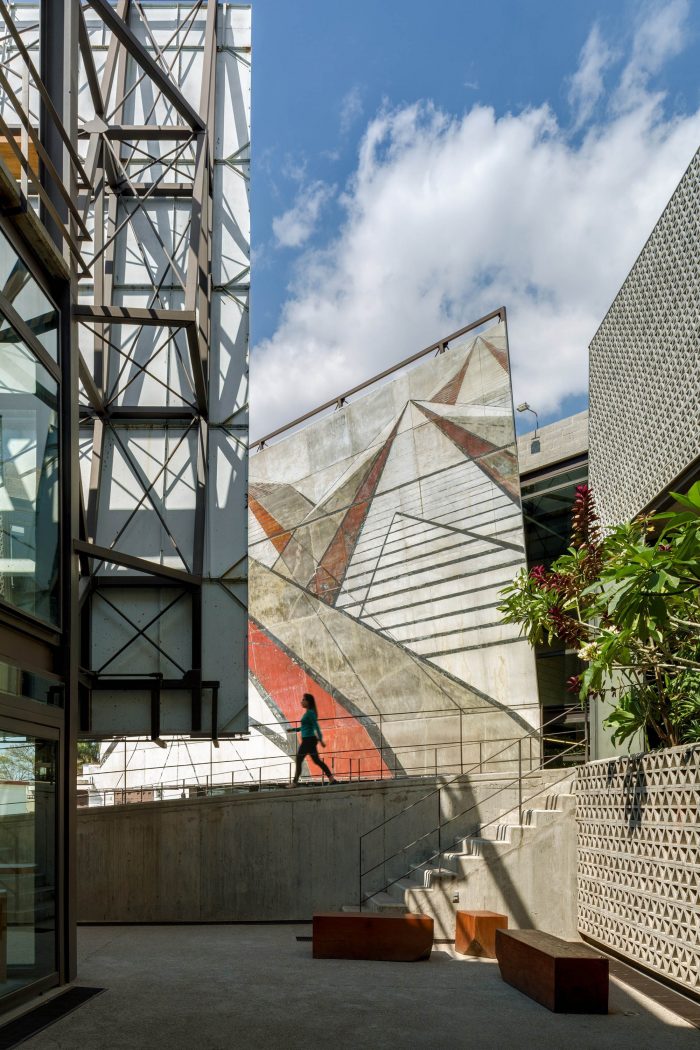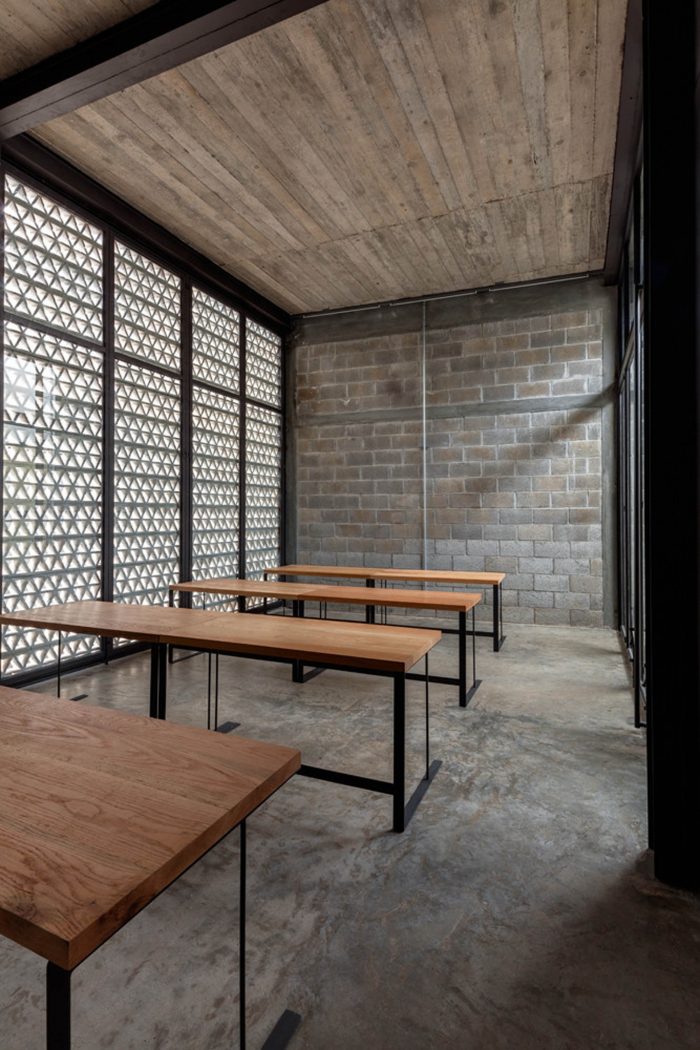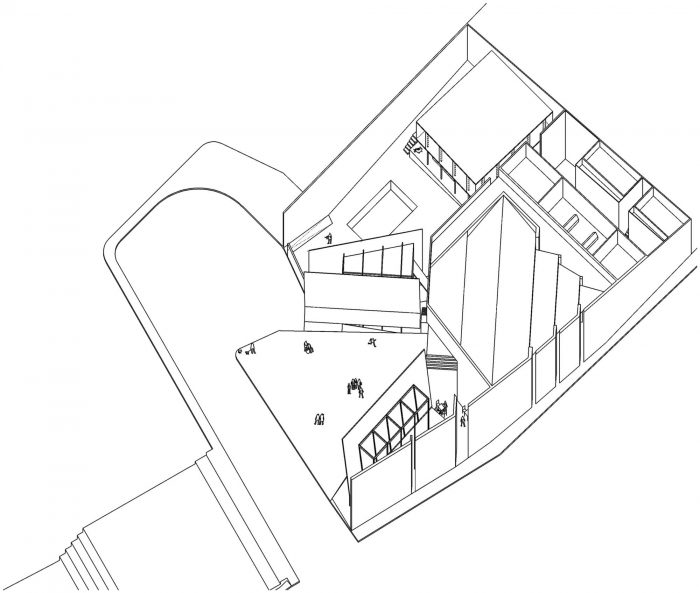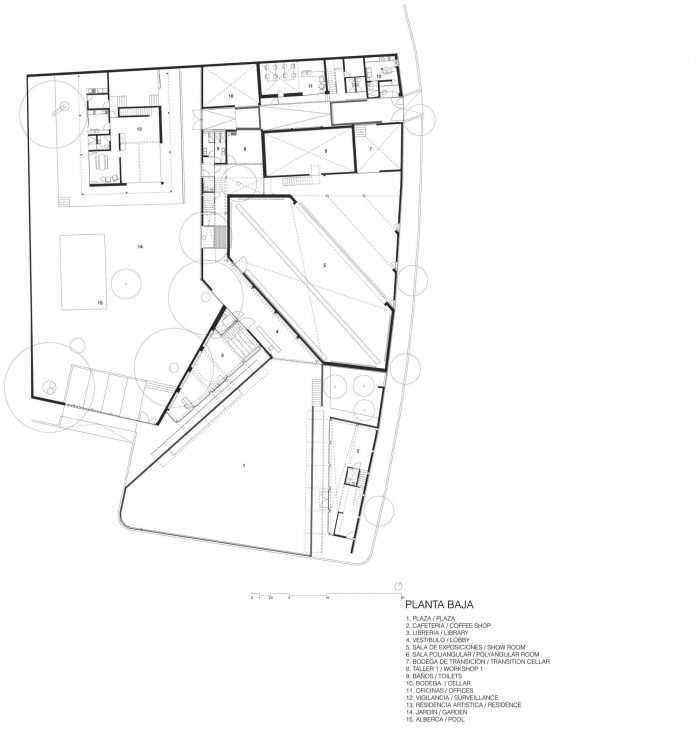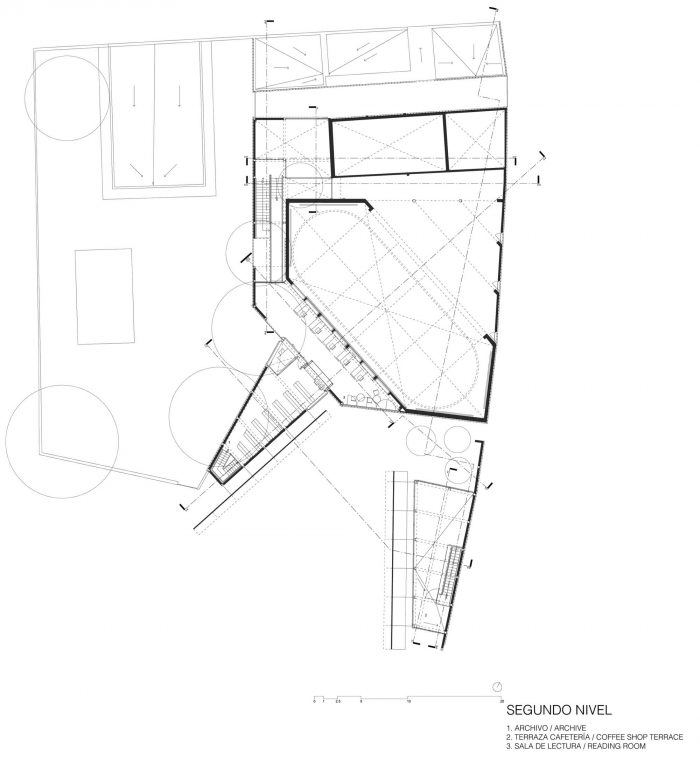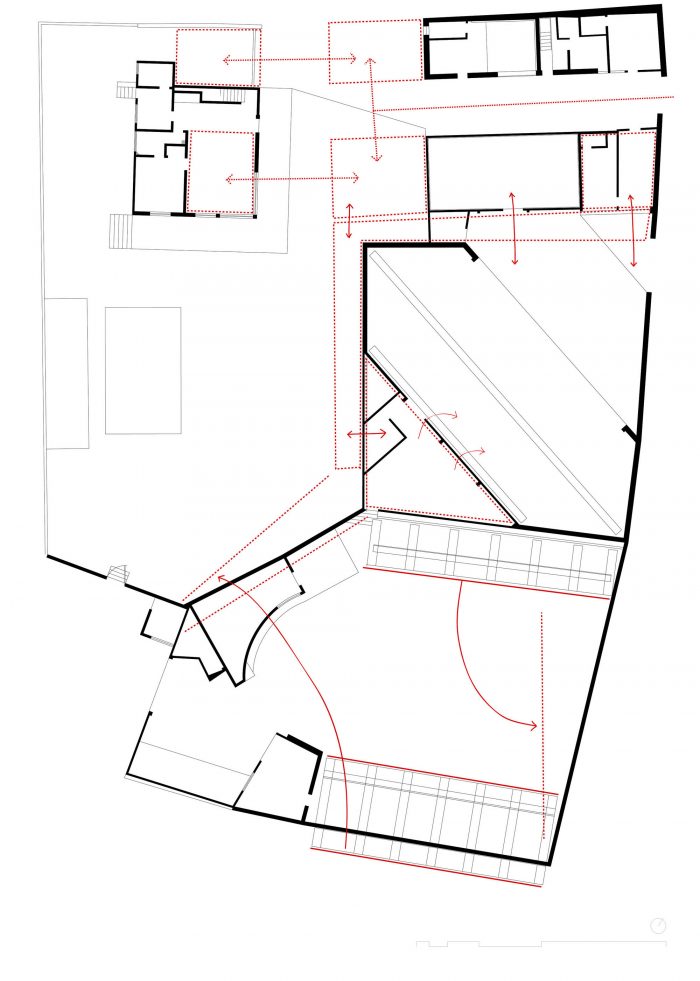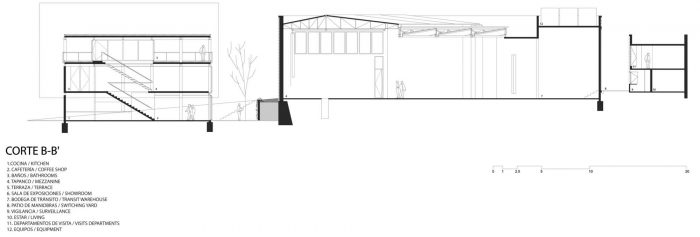通过一个单一的姿态–通过旋转Siqueiros壁画从原来的位置打开博物馆的庭院和广场–“La Tallera “的提案在博物馆/工作室和周围空间之间产生了一种新的关系。通过这个简单的操作,立面的象征性元素在建筑的建筑语法中发挥了新的作用,让参观者与博物馆建立了新的关系。
Through one single gesture –opening the museum’s courtyard to the plaza by rotating Siqueiros murals from their original position– the proposal for “La Tallera” generates a new relationship between the museum/atelier and its surrounding spaces. With this simple operation, the symbolic elements of the façade play a new role in the architectural syntaxes of the building, engaging the visitor in a new relationship with the museum.
随着庭院向街道开放,”La Tallera “给公共空间提供了地面,同时将相邻的广场整合为建筑群的延伸。壁画将以两种方式发挥作用:首先,作为与广场的视觉和程序性联系,包含博物馆的公共区域,如自助餐厅和图书馆;其次,作为 “程序性墙”,将博物馆/工作室和生活区分开。
As the courtyard opens towards the street, “La Tallera” gives ground to the public space, while integrating the adjacent plaza as an extension of the complex. The murals will now work in two ways: first, as a visual and programmatic link with the plaza, by containing the public areas of the museum, such as the cafeteria and the library; and secondly, as a “programmatic wall”, that divides the museum/atelier and the living quarters.
该提案通过一个互动模型/板块来展示,该模型/板块展开为一系列信息板块,可以在多个读数中显示,加强了项目的基本概念:一个展开的序列,产生新的空间联系和关系。
The proposal was presented through an interactive model/board that unfolds unto a series of informative panels that can be displayed in multiple readings, enhancing the project’s underlying concept: an unfolding sequence that generates new spatial links and relations.
建筑师:Frida Escobedo
城市:CUERNAVACA
国家: 墨西哥
Architects: Frida Escobedo
City: CUERNAVACA
Country: Mexico

